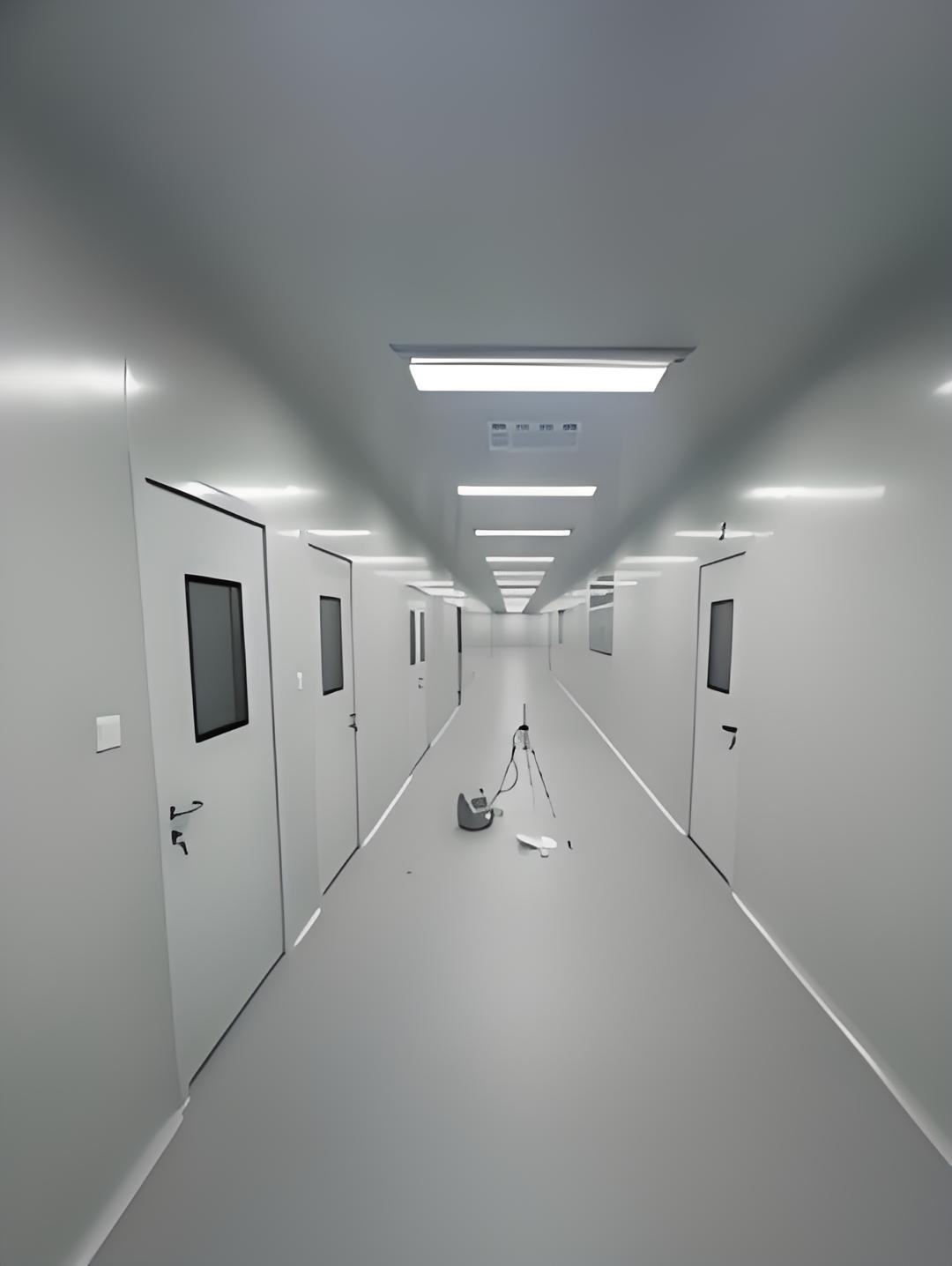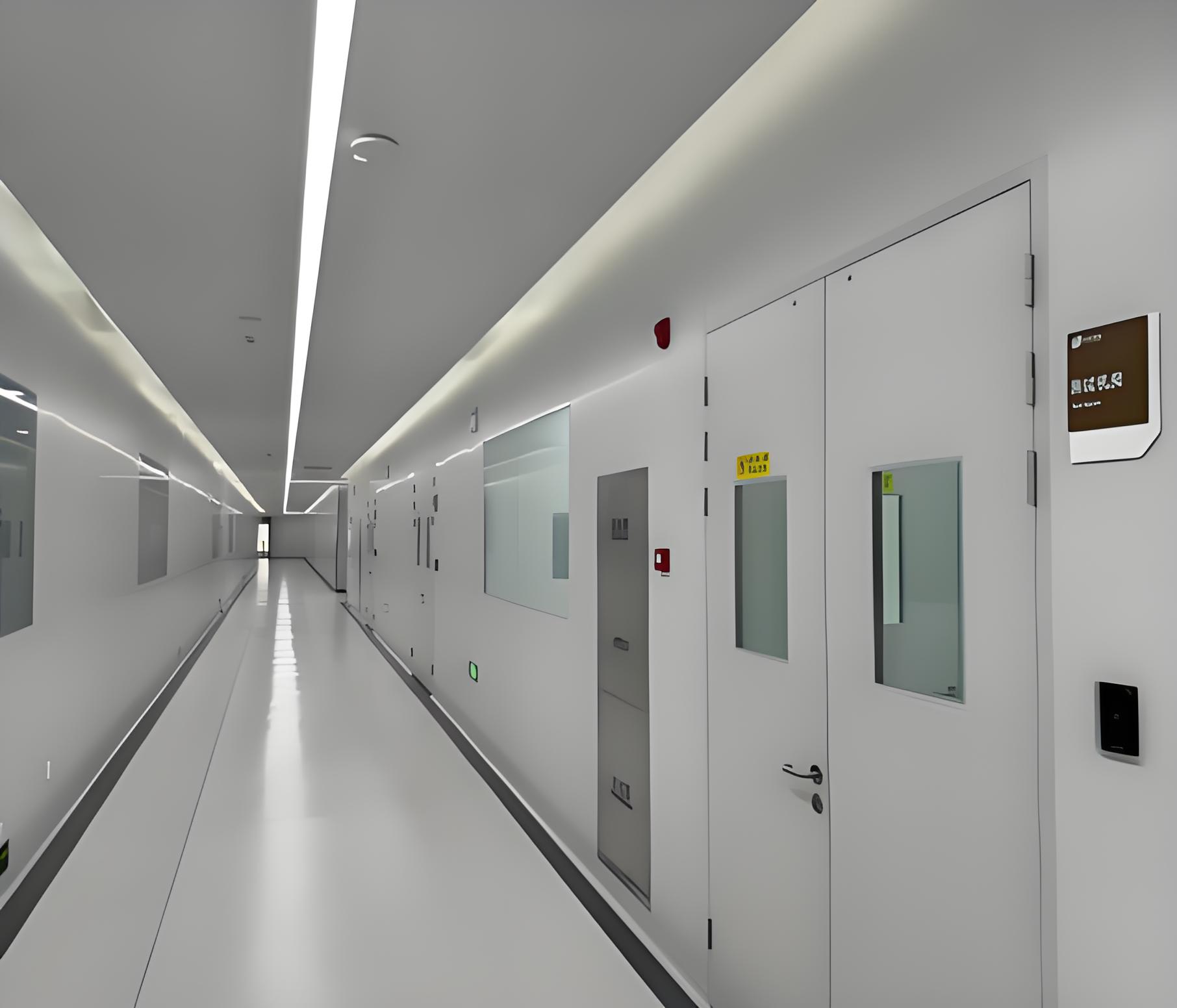




In the world of precision manufacturing, pharmaceuticals, biotechnology, and electronics, maintaining an immaculate environment is not just a goal—it's an absolute necessity. At the heart of every high-functioning cleanroom lies a critical component often overlooked: the clean room airlock design. This essential architectural feature acts as a secure buffer zone, safeguarding the pristine internal environment from the contaminated outside world. A well-executed air lock design for cleanrooms is the primary defense against particulate, microbial, and cross-contamination, making it fundamental to product quality, safety, and compliance.
This article delves into the intricacies of airlock systems, exploring the distinct roles of the personnel airlock cleanroom and material airlock cleanroom, while also addressing common design and operational challenges.

An airlock is a transitional, enclosed space with two or more doors, placed between different controlled environments of varying cleanliness levels. The core principle of any clean room airlock design is that these doors are never opened simultaneously. This simple rule prevents the direct flow of contaminated air from a less clean area into a higher classification cleanroom.
The functionality of an airlock is governed by pressure differentials. Cleanrooms are maintained at a higher pressure than the surrounding areas (positive pressure) to force air outwards, preventing influx of contaminants when a door is opened. Conversely, areas containing hazardous materials might be kept at a lower pressure (negative pressure) to contain risks within. The air lock design for cleanrooms meticulously manages these pressure cascades to ensure air always flows from the cleanest zone to the less clean ones, effectively flushing out contaminants that might enter the airlock.
People are the largest source of contamination in a cleanroom. We shed skin particles, hair, and microbes, and we bring in contaminants from our clothing and the external environment. The personnel airlock cleanroom is specifically designed to mitigate this risk through a rigorous de-gowning and grooming process.
Interlocking Doors: A fundamental feature where the inner door cannot be opened until the outer door is securely closed, and vice versa. This electronically or mechanically enforced system is non-negotiable in a proper clean room airlock design.
Air Showers: Many personnel airlocks incorporate an air shower between the two doors. When an occupant enters, high-velocity, HEPA-filtered air jets are activated from multiple nozzles, "blowing off" loose particulate matter from their gowning attire before they proceed into the main cleanroom.
Gowning Bench and Provisions: The airlock includes a designated area with benches for sitting while donning cleanroom garments (e.g., bouffant caps, hoods, coveralls, boots, and gloves). Mirrors are often installed to allow personnel to check their gowning for proper fit and coverage.
Sticky Mats: Floor-mounted adhesive mats are placed at the entrance to remove particles from the soles of shoes.
The procedure within a personnel airlock cleanroom is a disciplined sequence: enter the first door, perform proper hand hygiene, sit on the "dirty side" of the bench, don all required garments, step into the air shower (if present), activate the cycle, and only then proceed through the second door into the cleanroom.
Just as people need a dedicated entry point, so do equipment, raw materials, and tools. The material airlock cleanroom, also known as a pass-through, is designed for the safe and controlled transfer of items without compromising the cleanroom's integrity.
Key Design Features of a Material Airlock:
Double-Door Pass-Throughs: Similar to personnel airlocks, these feature two doors that are interlocked to prevent simultaneous opening. They are often sized to accommodate carts, large equipment, and bulk materials.
UV-C Lights or Sanitization Systems: To provide an additional layer of decontamination, some material airlocks are equipped with ultraviolet germicidal irradiation (UVGI) systems. These lights activate for a set cycle time to sanitize the surfaces of items placed inside.
Smooth, Cleanable Surfaces: The interior surfaces of a material airlock cleanroom are typically constructed of non-shedding, durable materials like stainless steel or laminated plastics that are easy to wipe down and disinfect.
Intercoms or Visual Indicators: Communication systems are crucial for coordinating transfers between personnel inside and outside the cleanroom, ensuring the correct transfer protocol is followed.
The transfer process involves placing the item(s) into the airlock from the outside, closing the outer door, performing any required sanitization cycle, and then allowing cleanroom personnel to retrieve the items from the inner side. This process ensures that external packaging, which is highly contaminated, is never brought into the clean environment.

A successful air lock design for cleanrooms is built on more than just installing two doors. Several engineering principles must be harmonized:
Pressure Differential: This is the most critical factor. The pressure relationship between the airlock and the adjacent rooms must be precisely calculated and consistently maintained using an automated Building Management System (BMS). A common setup is to have the cleanroom at the highest pressure, the airlock at a medium pressure, and the unclassified area at the lowest pressure.
Air Changes per Hour (ACH): Airlocks require a high number of air changes—often significantly higher than the main cleanroom—to effectively purge contaminants. The exact ACH is determined by the size of the airlock and the required cleanliness classification.
Construction Materials: Walls, ceilings, and floors must be non-porous, non-shedding, and resistant to chemicals used for cleaning and disinfection. Common materials include painted mild steel, powder-coated aluminum, and stainless-steel panels.
Sealing: All penetrations for utilities, lights, and windows must be perfectly sealed. Doors require high-quality gaskets to ensure an airtight seal when closed.
Even with a sound initial design, facilities can encounter operational issues. Awareness of these common problems is the first step toward prevention and correction.
1. Inadequate Pressure Differential
Problem: The most frequent issue is a pressure differential that is too low or unstable. This can be caused by HVAC system imbalances, leaks in the room structure, or incorrect fan speeds. If the differential is too low (e.g., less than 0.05 inches of water column), it cannot resist the influx of air when a door is opened.
Solution: Regular monitoring and calibration of pressure sensors and HVAC systems are essential. A room integrity test (smoke test) can visually identify leaks around doors, seals, and penetrations that need to be addressed.
2. Improper User Protocol and Training
Problem: The most sophisticated clean room airlock design is useless if personnel do not follow protocols. Holding both doors open, skipping steps in the gowning procedure, or overloading a material airlock completely negates its purpose. This is a common failure point in personnel airlock cleanroom operations.
Solution: Comprehensive and ongoing training is critical. Clear, visual Standard Operating Procedure (SOP) guides should be posted inside and outside the airlock. Interlocking doors that enforce a waiting period can help instill discipline.
3. Poorly Designed Material Handling
Problem: A material airlock cleanroom that is too small for regular carts or equipment leads to operational bottlenecks and tempts staff to prop doors open. Furthermore, a lack of clear procedures for wiping down items before transfer renders the airlock less effective.
Solution: Design airlocks based on the largest items that will need regular transfer. Implement and enforce strict SOPs for decontaminating the outer surfaces of all items before they are placed into the airlock.
4. Mechanical Failures
Problem: Interlock mechanisms, door seals, and HVAC systems can fail over time. A broken door interlock is a severe breach, as it allows for the simultaneous opening of both doors.
Solution: Implement a proactive preventive maintenance schedule for all mechanical components of the airlock system, including doors, HVAC units, and control systems. Immediate repairs are mandatory for any fault.
5. Incorrect Airlock Type for the Application
Problem: Using a single airlock type for all situations is a mistake. For instance, a cascading airlock (where pressure descends from cleanroom to airlock to corridor) is standard for most positive pressure rooms. However, a bubble airlock (higher pressure inside the airlock than on both sides) might be used for an especially critical area, while a sink airlock (lower pressure inside the airlock than on both sides) is used for containing hazardous powders or vapors.
Solution: The air lock design for cleanrooms must be tailored to the specific process and contamination control goals of the facility. Engaging with experienced cleanroom designers at the outset is crucial.
The clean room airlock design is far more than a simple passageway; it is a sophisticated engineering control that is fundamental to contamination control strategy. A well-designed and properly maintained system, which includes a disciplined personnel airlock cleanroom for human entry and a efficient material airlock cleanroom for goods transfer, forms the robust barrier that protects product integrity, ensures patient safety, and guarantees regulatory compliance.
Investing in a correct air lock design for cleanrooms, coupled with rigorous training and maintenance, is not an area for compromise. It is, unequivocally, an investment in the quality and success of the operations within. By understanding the principles and common pitfalls outlined above, facility managers and engineers can ensure their first line of defense remains strong and effective.